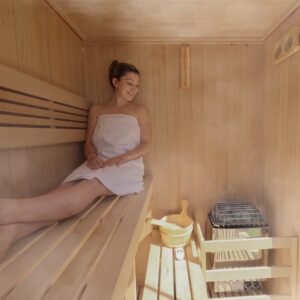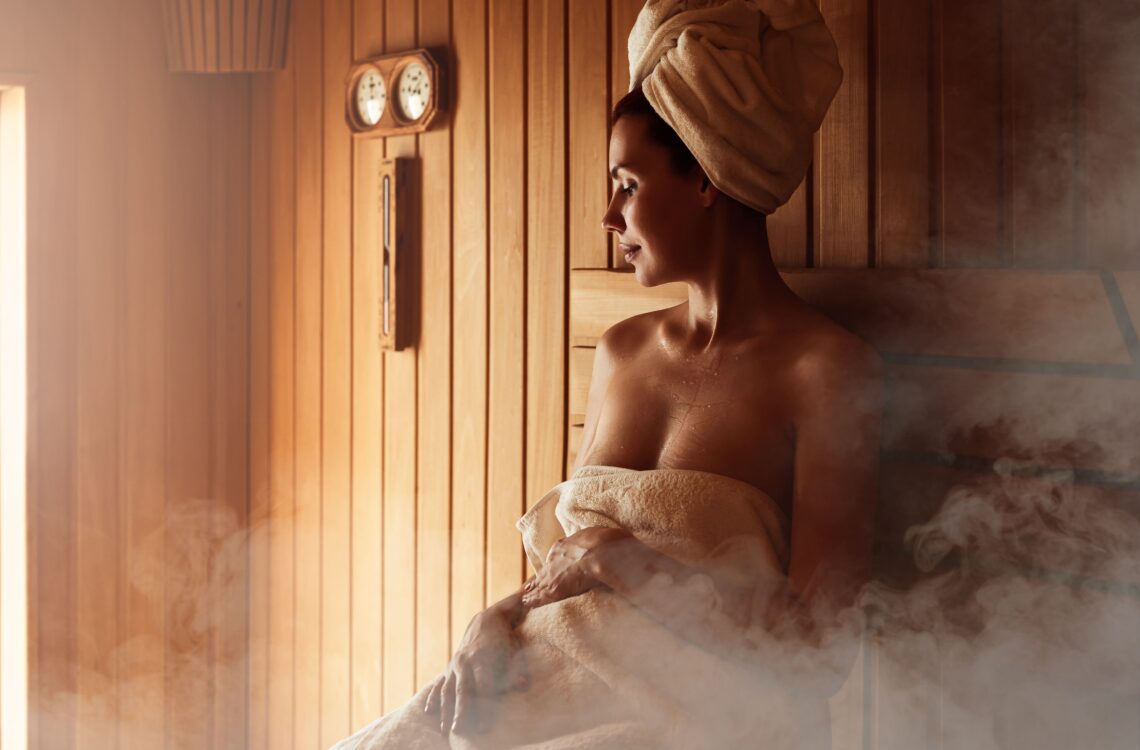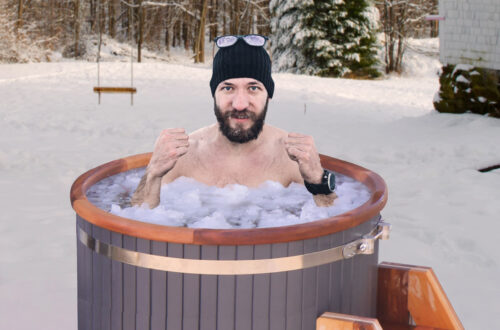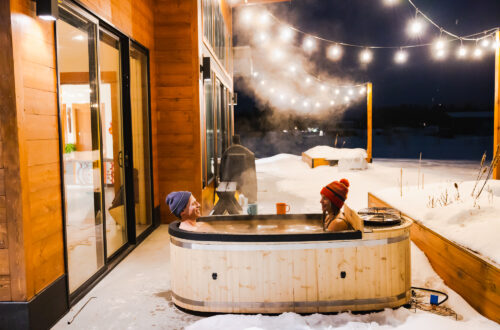After a long day, you play your favorite meditative playlist and settle into your sweltering sauna session, feeling the stress melt away with the beads of sweat that race down your body. The comforting heat of saunas can detoxify the body, support relaxation, and improve sleep—but when you’re thinking about when to use a sauna, you’ll definitely want to keep the heat in mind. So, what is the ideal sauna temperature for you?
Ultimately, sauna bathing temperatures will differ depending on the style of the sauna and the dry heat and moist heat tolerance of the user.
In this guide, we’ll go over everything you need to know about setting the correct temperature on three common sauna room styles. By the time you’ve finished reading, you’ll be ready to slip on your terry cloth robe and into relaxed warmth.
How to Choose the Right Sauna Temperature
Saunas are an enjoyable experience that can bring mental and physical relaxation and rejuvenation. They date back thousands of years, during which time they’ve been put to a variety of uses, from regular bathing to childbirth.
But to get the best sauna experience, you need to choose the right temperature. Fortunately, this isn’t a difficult task. Setting the right sauna temperature is primarily a matter of your personal preference and the type of sauna you’re using.
Three of the most common sauna types are:
- Traditional sauna or Finnish sauna
- Dry sauna
- Steam sauna or Turkish sauna
Depending on the type of sauna you use, there are general guidelines to consider when learning how to clean a sauna and to ensure your sauna experience is safe and comfortable with the right temperature.

Traditional Sauna Temperatures

Traditional saunas are designed after the original Finnish model and work primarily through low heat and humidity control. So, what temperature is a sauna most comfortable?
For traditional saunas, the recommended temperature is at least 150°.
Depending on your desired experience, you can raise the temperature a few degrees. But keep in mind that the temperature will vary depending on where you sit in the sauna. If you’re seated closer to the heated rocks, your body will experience higher temperatures that are authentic to the traditional sauna experience.
Humidity control is the second aspect of a traditional sauna. The humidity is regulated by two things:
- Heated rocks
- Water
Keep a water bucket and ladle inside your sauna to pour water over the sauna rocks. They’ll steam and increase the humidity in the sauna. Humidity is more a matter of your own comfort than temperature, but it should be between 20% and 40%.
Dry Sauna
Dry saunas are very similar to traditional saunas, with a far lower humidity level. In dry saunas, you don’t have to pour water over the heated rocks, so the humidity level should be around 10%.
Like traditional saunas, dry saunas shouldn’t be set lower than 150°. They’re amenable to a considerable range of temperature, however, and can be set as high as 195°.
Steam Sauna
Steam saunas forsake the wood of traditional and dry saunas in favor of tiles. In most steam saunas, the tiles are made from one of two materials:
- Acrylic
- Glass
Using tiles instead of wood has the effect of ramping up the humidity levels to around 100%. As a result, the interior of the sauna becomes filled with steam.

In steam saunas, you can’t control the humidity by regulating the water you ladle onto the sauna rocks. For this reason, the temperature in a steam sauna will usually feel several degrees warmer than it is. So, how hot are saunas supposed to be if you’re using a steam sauna? Because the humidity keeps things pretty warm, the temperature in a steam sauna shouldn’t exceed 120° F.
Are Saunas Safe?
Whether you use a traditional Finnish sauna, wet sauna, dry sauna, outdoor traditional sauna, or find yourself at a sauna lodge, safety is always a priority. When set to the correct temperature and humidity levels, saunas are very safe to use. However, there are some conditions that can make using a sauna riskier than usual. As such, you should always take the following factors into consideration before taking a sauna bath:
- Your hydration level – Because saunas are all about sweating, you should always be properly hydrated before using one. Drinking plenty of water before you go in can help minimize the risk of dehydration.
- Time use – It can be tempting to sit in the warm relaxation of a sauna for hours, but doing so can be dangerous. Limit your time to around 15 minutes for optimal safety.
- Avoid alcohol – It’s best to avoid consuming alcohol directly before and after sauna use. Drinking alcohol will only increase your risk of dehydration and could lead to dizziness or fainting.
ALEKO: For All Your Sauna Needs
The ideal temperature of your sauna will largely depend on the type of sauna you use. Learn more about the differences between a dry sauna vs wet sauna. While traditional and dry saunas should be set at a minimum air temperature of 150°, steam saunas typically shouldn’t exceed 120°.
Getting the most out of your sweat session starts with turning to trusted experts who can help you choose a sauna that can meet your needs and operate it safely and effectively.
Since 2005, ALEKO has been connecting people all over the world with high-quality saunas and products like sauna heaters and sauna accessories at affordable prices. How much does a sauna cost? The total cost depends on a few factors, all of which we’ll cover when you’re considering what type of sauna you want.
Whether you want an outdoor, dry, or indoor sauna experience, we offer a range of saunas for sale in various designs and styles that are well-made and crafted to promote a sauna experience that transforms your self-care routine. If you’re looking to expand your recovery routine, check out our cold plunge tub! There are a multitude of benefits by using a sauna and cold plunge together!
Sources:
Evidence-Based Complementary and Alternative Medicine. Clinical Effects of Regular Dry Sauna Bathing: A Systematic Review. https://www.ncbi.nlm.nih.gov/pmc/articles/PMC5941775/
Sauna Society. Your Sauna Experience Depends on Sauna Type.
https://www.saunasociety.org/sauna-experience
Healthline. Dry Saunas: Benefits and Comparison with Steam Rooms and Infrared Saunas. https://www.healthline.com/health/dry-sauna-benefits#precautions






